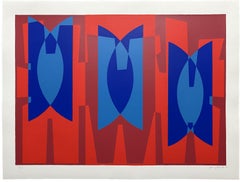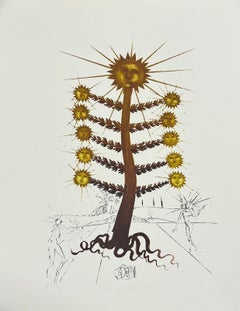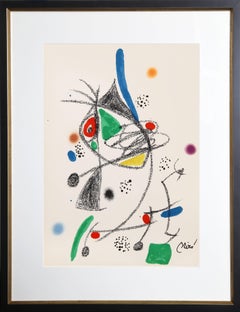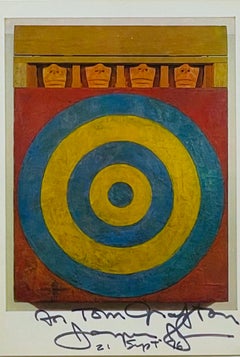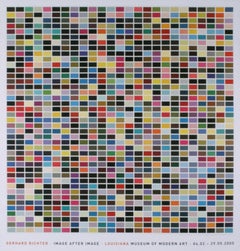Abstract Prints
1960s Surrealist Abstract Prints
Lithograph
1970s Abstract Abstract Prints
Screen
20th Century Abstract Abstract Prints
Color
1970s Modern Abstract Prints
Lithograph
1970s Pop Art Abstract Prints
Postcard
2010s Contemporary Abstract Prints
Lithograph, Offset
1960s Pop Art Abstract Prints
Plastic, Mixed Media, Screen
1980s Pop Art Abstract Prints
Screen
2010s Surrealist Abstract Prints
Giclée
2010s Pop Art Abstract Prints
Digital, Lithograph, Offset
1980s Abstract Abstract Prints
Offset
1980s Color-Field Abstract Prints
Acrylic, Handmade Paper, Monotype
1970s Abstract Abstract Prints
Paper, Lithograph
1970s Abstract Geometric Abstract Prints
Lithograph
1970s Surrealist Abstract Prints
Mixed Media, Drypoint, Lithograph, Screen
20th Century Abstract Abstract Prints
Paper
1980s Abstract Expressionist Abstract Prints
Screen
1990s Abstract Abstract Prints
Silk
1970s Surrealist Abstract Prints
Lithograph
21st Century and Contemporary Abstract Geometric Abstract Prints
Canvas, Cotton Canvas
1980s Cubist Abstract Prints
Offset
1990s Contemporary Abstract Prints
Mezzotint
1980s Pop Art Abstract Prints
Lithograph, Offset
1990s Abstract Prints
Lithograph
21st Century and Contemporary Contemporary Abstract Prints
Archival Ink, Archival Paper, Photographic Paper, Archival Pigment, Giclée
1990s Contemporary Abstract Prints
Lithograph
2010s Pop Art Abstract Prints
Textile, Digital
Early 2000s Street Art Abstract Prints
Screen
1970s Abstract Expressionist Abstract Prints
Lithograph
1970s Abstract Abstract Prints
Lithograph
1980s Surrealist Abstract Prints
Etching, Aquatint
1960s Abstract Expressionist Abstract Prints
Lithograph
Mid-20th Century Abstract Abstract Prints
Screen
2010s Abstract Abstract Prints
Lithograph
1970s Surrealist Abstract Prints
Lithograph
1980s Modern Abstract Prints
Lithograph
1980s Pop Art Abstract Prints
Woodcut
2010s Abstract Prints
Photographic Paper
1930s Modern Abstract Prints
Lithograph
2010s Abstract Impressionist Abstract Prints
Photographic Film, Photographic Paper, C Print, Giclée, Archival Pigment
1980s Pop Art Abstract Prints
Ink, Lithograph, Offset, Mixed Media
1970s Surrealist Abstract Prints
Mixed Media, Drypoint, Lithograph, Screen
1960s Abstract Abstract Prints
Lithograph
Early 2000s Contemporary Abstract Prints
Cotton, Thread, Paper, Mixed Media, Offset, Screen
1970s Modern Abstract Prints
Lithograph
1960s Abstract Expressionist Abstract Prints
Lithograph
2010s Abstract Abstract Prints
Paper
1960s Abstract Prints
Lithograph
1970s Abstract Prints
Lithograph
1990s Abstract Geometric Abstract Prints
Offset
1970s Abstract Geometric Abstract Prints
Screen
2010s Hard-Edge Abstract Prints
Lithograph
1980s Other Art Style Abstract Prints
Paper, Screen
2010s Abstract Abstract Prints
Lithograph, Offset
1970s Modern Abstract Prints
Lithograph
1990s Contemporary Abstract Prints
Postcard, Permanent Marker
1960s Modern Abstract Prints
Lithograph
1960s Modern Abstract Prints
Lithograph
1960s Surrealist Abstract Prints
Lithograph
1970s Abstract Geometric Abstract Prints
Screen
Bring Abstract Prints into Your Home Today
Explore a vast range of abstract prints on 1stDibs to find a piece to enhance your existing collection or transform a space.
Unlike figurative paintings and other figurative art, which focuses on realism and representational perspectives, abstract art concentrates on visual interpretation. An artist may use a single color or simple geometric forms to create a world of depth. Printmaking has a rich history of abstraction. Through materials like stone, metal, wood and wax, an image can be transferred from one surface to another.
During the 19th century, iconic artists, including Edvard Munch, Paul Cézanne, Georgiana Houghton and others, began exploring works based on shapes and colors. This was a departure from the academic conventions of European painting and would influence the rise of 20th-century abstraction and its pioneers, like Pablo Picasso and Piet Mondrian.
Some leaders of European abstraction, including Franz Kline, were influenced by the gestural shapes of East Asian calligraphy. Calligraphy interprets poetry, songs, symbols or other means of storytelling into art, from works on paper in Japan to elements of Islamic architecture.
Bold, daring and expressive, abstract art is constantly evolving and dazzling viewers. And entire genres have blossomed from it, such as Color Field painting and Minimalism.
The collection of abstract art prints on 1stDibs includes etchings, lithographs, screen-prints and other works, and you can find prints by artists such as Joan Miró, Alexander Calder and more.
Read More
Joan Mitchell’s Rare, Late-Career Diptych Buzzes with Life
Beneath the inky blackness, the painter’s irrepressible energy electrifies this pair of intaglio prints.
The 1stDibs Guide to Types of Abstract Art
Get to know the key movements and artists who have influenced visual culture for more than a century.
Get to Know the Artists Who Led the Op Art Movement
In the 1960s and '70s, the hypnotic creations of Op artists went mainstream and influenced the look of pop culture.
